John Hurrell – 18 May, 2022
The two works with the ‘father' and ‘daughter' exert a dominant place in this show. He is in an arm chair while she is standing behind him and leaning over. One is giving advice to the other.
We wonder: Who is talking? Who is listening, and what are they planning? She's wearing pearls, he a black bow tie, so there is a distinct ambience of privilege. Are they looking at a book, legal document or important image? He seems to be listening to her very carefully. Her mouth is close to his right ear.
The seven large Bill Henson photographs we see here downstairs at Starkwhite, were constructed with carefully chosen models, garments and locations, and made between 1990 and this year. As is typical with Henson, dramatic lighting and surrounding darkness are major ingredients in the composition of each image.
Four of the seven are portraits, two are landscapes, and the seventh deals with the watery elements of turbulent weather while doubling as another landscape. The last three can be seen as metaphorical extension of the head studies. The minds behind the faces.
The portraits are psychologically intense, showing facial expression and gesture (bodily exteriors that hint at internal mental processes) while the subjects, a young girl conspiratorially whispering thoughts to a much older male (her father or uncle), or an older girl (possibly the young girl’s older sister?) deep in thought while apparently alone.
The two works with the ‘father’ and ‘daughter’ exert a dominant place in this show. He is in an arm chair while she is standing behind him and leaning over. One is giving advice to the other.
We wonder: Who is talking? Who is listening, and what are they planning? She’s wearing pearls, he a black bow tie, so there is a distinct ambience of privilege. Are they looking at a book, legal document or important image? He seems to be listening to her very carefully. Her mouth is close to his right ear.
In two other images, the older girl, fast approaching becoming a young woman, is confident and assured, but deep in thought. No sign of stress, just pondering and alert. Though pale she seems happy. She is wearing a Victorian necklace perhaps from her great great grandmother.
The same young teenager is also in a subtly brooding photo set on a hilltop overlooking a city at night. There is a strong sense of tiredness and exasperation. Somebody else (unseen) is with her, perhaps a lover, but she looks exhausted and unhappy—as if she has just been told bad news. Her mind is directed towards other places, other times.
Henson presents a steep volcanic island—a symbol of isolation—in the southern seas, silhouetted against a glowing evening sky, and surrounded by a handful of protruding scrub-covered rocky outcrops off its coasts. Their eroded white cliffs dramatically catch the last flares of sunlight as night-time approaches. The sea around them is perfectly still. No hint of a breeze.
In the image with the glowing cascading water, an unusually wide waterfall is slicing through the darkness, dominating the space. Within its tumbling misty fluid forms we see the suggested evanescent shapes of rocks, angular peaks and vertically elongated hills. The setting is apparently rural yet the front ‘ground’ surface is solid, not liquid, and seems manmade. While the waterfall itself is alive with little rivulets, hovering exploding bubbles and skeins from suspended splashes, the foreground is flat with only very small rippling waves. There could be concrete underneath. It is puzzlingly stable.
The rural dirt road of Henson’s last image is not just a road but possibly a conduit to a new or old destination. It has symbolic or metaphorical value. In this sense, if it is about time, it could lead to the future or the past, there embedded with the contingent details of the life trajectories of two very young women and a much older man.
John Hurrell
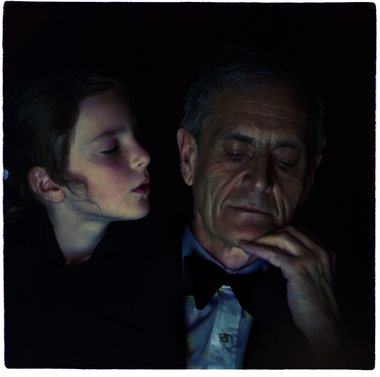
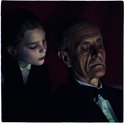

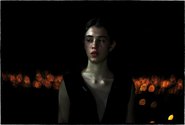
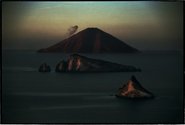

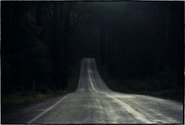
 Advertising in this column
Advertising in this column Two Rooms presents a program of residencies and projects
Two Rooms presents a program of residencies and projects



This Discussion has 0 comments.
Comment
Participate
Register to Participate.
Sign in
Sign in to an existing account.